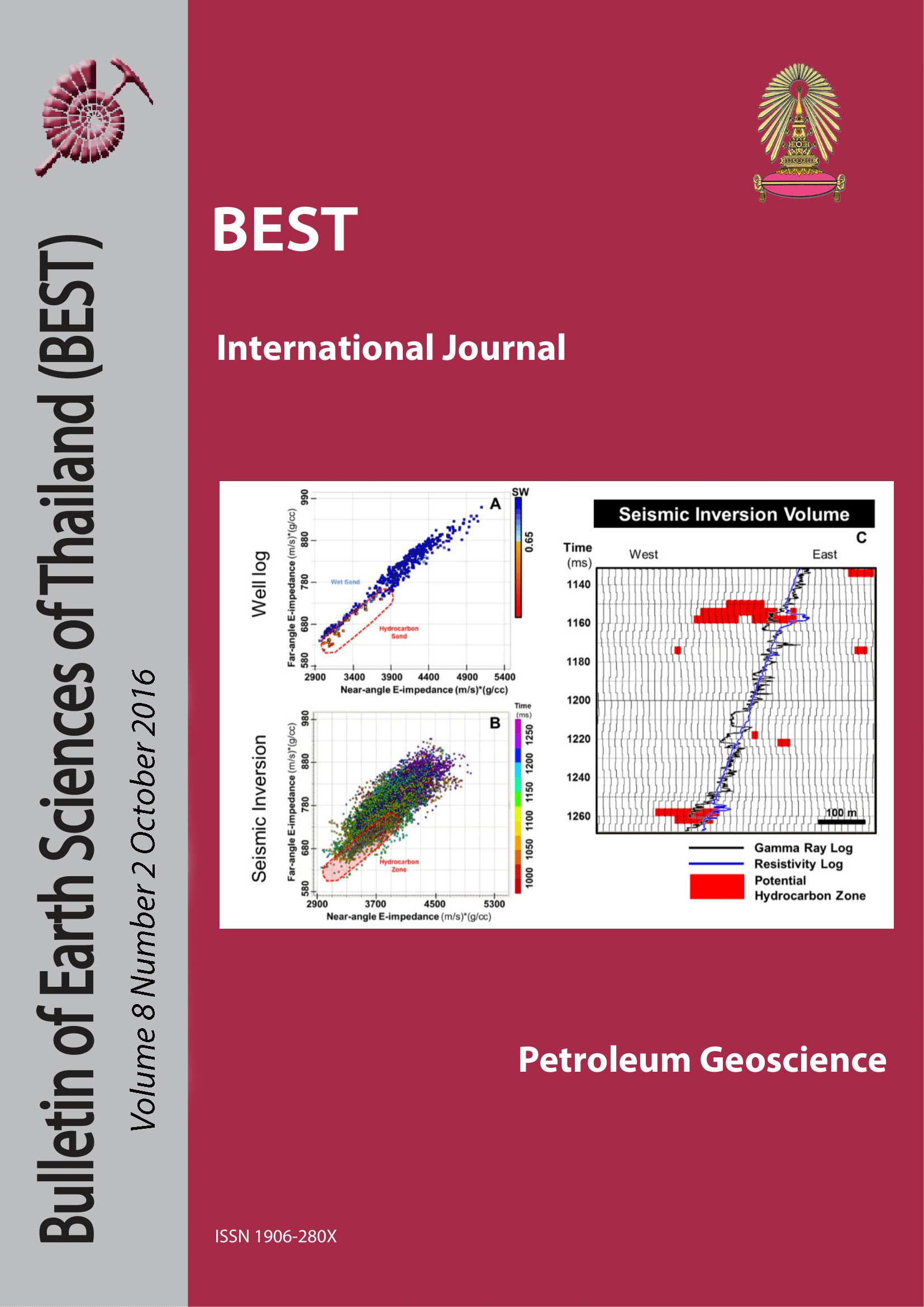RESERVOIR CHARACTERIZATION USING SEISMIC ATTRIBUTES AND SEISMIC INVERSION OF GLOBIGERINA LIMESTONE RESERVOIR, MADURA STRAIT, INDONESIA
Main Article Content
Abstract
To characterize the reservoir in the subsurface, an integration of 3D seismic data and well data is very powerful as it can reveal the lateral and vertical distribution of particular characteristics of the reservoir. This study focuses on the Pliocene age, Mundu Formation in Madura Strait, Indonesia. The reservoir is a bioclastic limestone which is mainly composed of Globigerina planktonic foraminifera tests. This formation has limited producing analogues outside the North East Java Basin which makes this reservoir quite unique. Moreover, there is no published work that discusses in depth about reservoir characterization using seismic attributes and inversion analysis plus the analysis of thinning and thickening of this type of reservoir. The uniqueness of the reservoir is revealed by horizons mapping, analyzing the seismic attributes and inversion analysis. Horizons mapping suggests that the thickness of the reservoir is largely influenced by the uncon-formity surface on its top and base. The analyses of the seismic attributes and inversion depict various characteristics such as fracture potential on the reservoir, predicted hydrocarbon and porosity distribution within the reservoir. Thus, by integration of these various analyses, it is expected that this study can be used for better delineation of the reservoir quality in the study area.
Article Details

This work is licensed under a Creative Commons Attribution-NonCommercial-NoDerivatives 4.0 International License.
Copyright © 2008 Department of Geology, Faculty of Science, Chulalongkorn University. Parts of an article can be photocopied or reproduced without prior written permission from the author(s), but due acknowledgments should be stated or cited accordingly.
References
Bransden, P.J.E., and S.J. Matthews, 1992, Structural and stratigraphic evolution of the East Java Sea, Indonesia: Proceedings 21st Indonesian Petroleum Association Annual Convention, 21, p. 417-453, Indonesian Petroleum Association, Jakarta, Indonesia
Chopra, S., and K.J. Marfurt, 2007, Seismic Attributes for Prospect Identification and Reservoir Characterization, Society of Exploration Geophysicists, Tulsa, p.45-71
Iriska, D.M., N.C. Sharp, S. Kueh, 2010, The Mundu Formation: Early Production Performance Of an Unconventional Limestone Reservoir, East Java Basin – Indonesia: Proceedings, Indonesia Petroleum Association 34 th Annual Convention and Exhibition, 17 pp.
Satyana, A. H. , E . Erwanto, and C. Prasetyadi, 2004, Rembang-MaduraKangean-Sakala (RMKS) Fault Zone, East Java Basin: The Origin and Nature of a Geologic Border, Proceedings Indonesian Association of Geologists (IAGI), 33rd Annual Convention
Sutadiwiria, G., and H. Prasetyo, 2006, Uncertainty in Geology-GeophysicsReservoir Modeling for Globigerinid Sands Carbonate in the NE-Java Basin, Indonesia: Case Study: Planning vs. Actual Field Development in the Madura Strait, Indonesia, Paper SPE 100957 presented at the 2006 SPE Asia Pacific Oil & Gas Conference and Exhibition, Adelaide, 11-13 September
Triyana, Y., G.I. Harris, W. Basden, E.F. Tadiar, and N. Sharp, 2007, The Maleo field: an example of the Pliocene Globigerina bioclastic limestone plays in the East Java Basin, Indonesia: Proceedings, Indonesia Petroleum Association 31st Annual Convention and Exhibition, 17 p
Tampubolon, R.A., 2016, The Shutdown of Diagenesis in Early Pliocene Globigerinid Limestone of Mundu Formation and Its Implication to Porosity and Permeability, M.Sc. Research Report, Petroleum Geoscience, Chulalongkorn University, Bangkok


